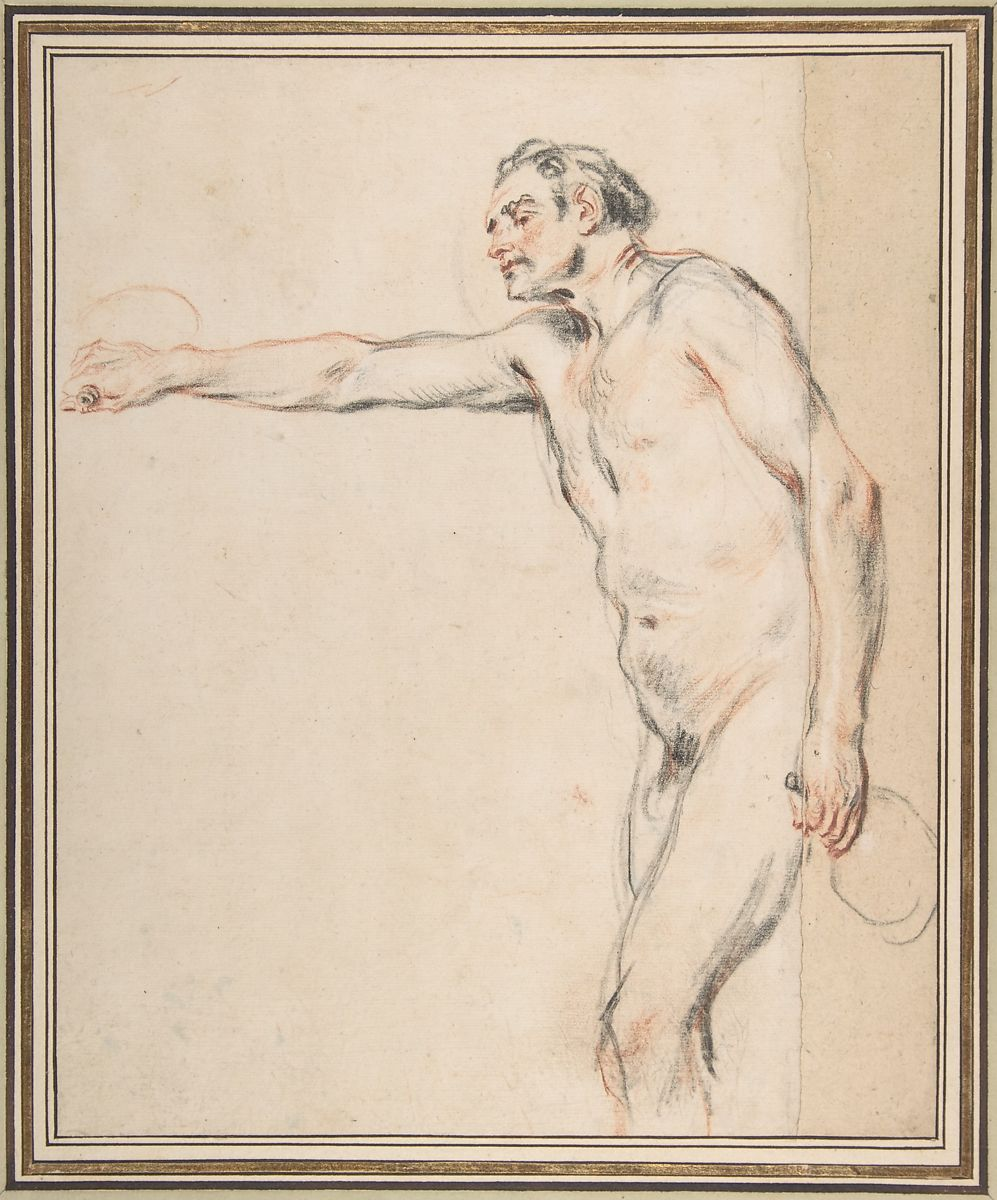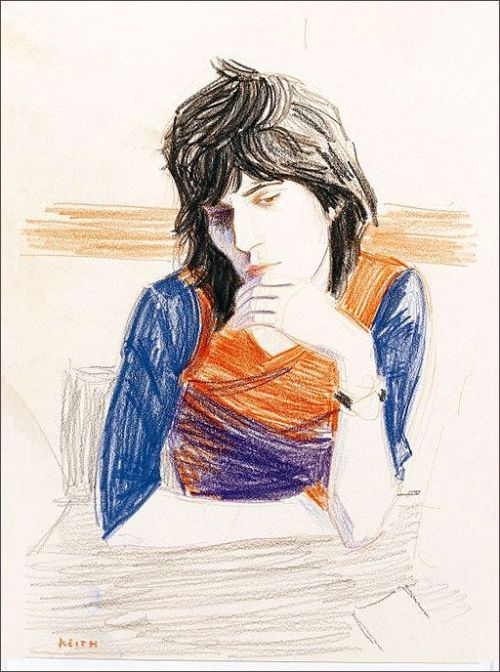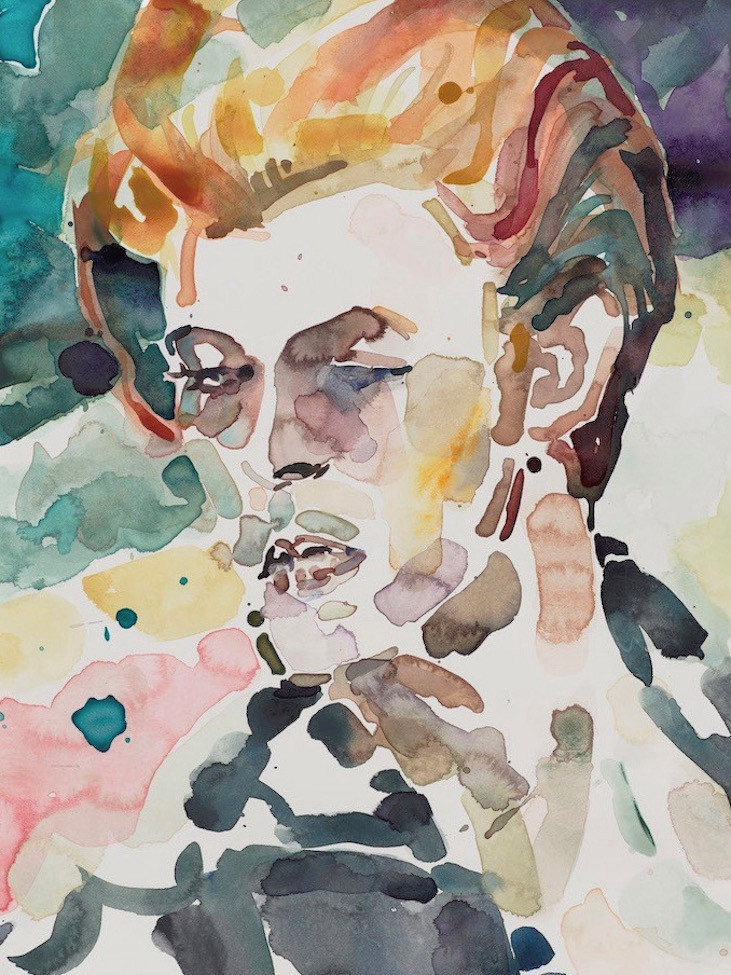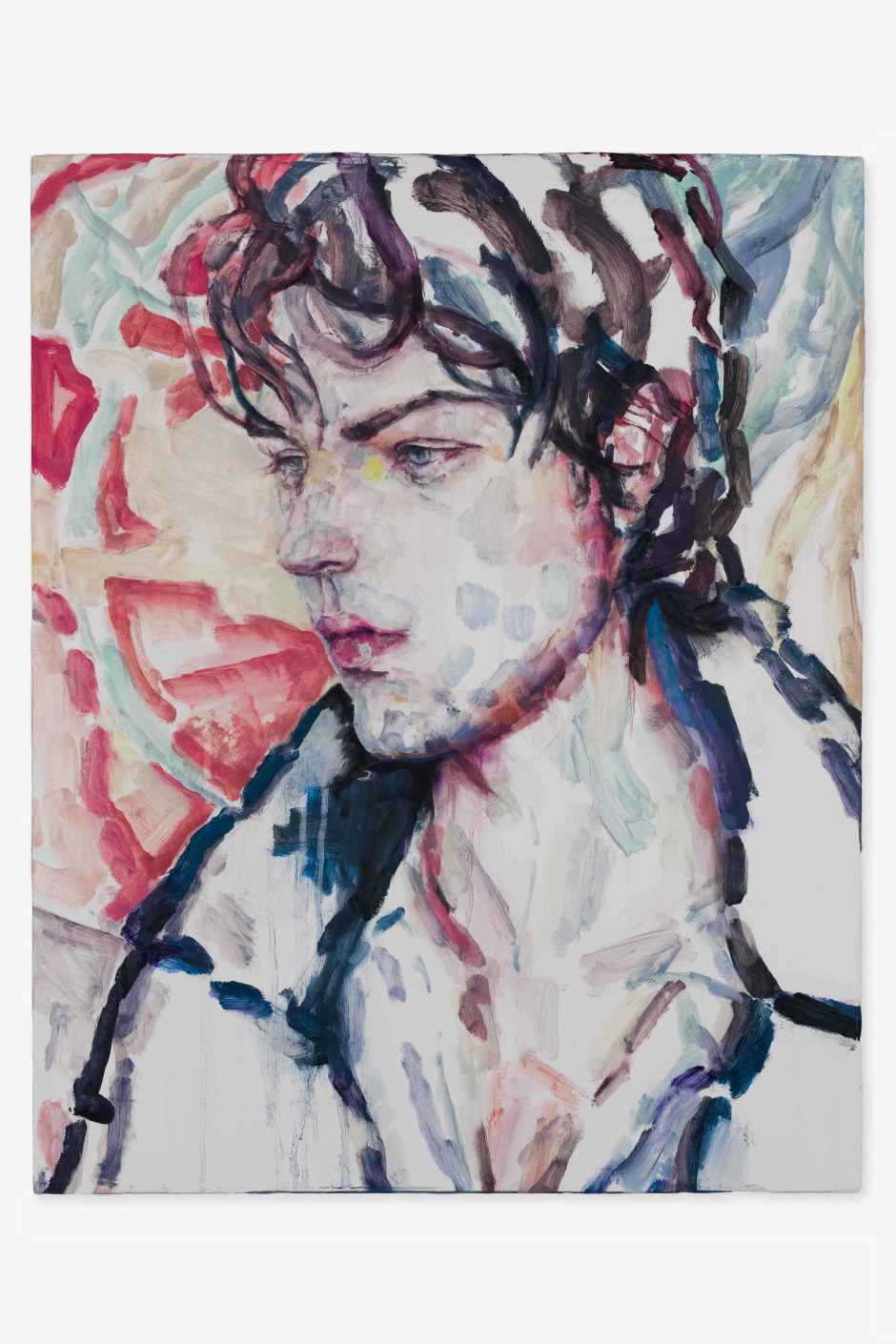Watteau: The pleasures of love
Elizabeth Peyton began like so many young girls by idolising certain pop stars, but instead of just putting posters up she made paintings of them. The 1980s upsurge in celebrity culture meant that the mainstream media was flooded by images of these new society doyennes, and Peyton was in the right place at the right time to be painting them. She modernised portraiture for the MTV generation, as a type of accessible documentation of fashionable celebrity lives. In a current time of selfies and celebrities engaging in and with nearly every aspect of the media this seems a bit simplistic but at the time she had clearly hit the 'what society wants from an artist' button. She very quickly therefore became a celebrity artist herself, and she was able to stylise and idealise her new and growing circle of friends, that also included newly glamorous artists, to which she would add more pop stars, trendy people from European monarchies and characters from literary fiction that seemed to somehow fit in, or who would have if they had been alive. Peyton's portraits and the lifestyles they depict, were an early forebear or warning of today's social media lifestyles where it begins to feel as if we are all worthy of celebrity status and if we don't have enough 'likes' we sulk.
Elizabeth Peyton
Elizabeth Peyton
Elizabeth Peyton
Watteau
Watteau
Peyton's subjects often stare blankly into space, or they inhabit the same space as other humans but make little attempt at making emotional contact. It is as if the air has been sucked out of their world. They are often 'unfinished' or at least incomplete. Peyton avoiding the work of completion, as if she has herself become like her sitters bored with the effort. Her portraits are of people existing, but not savouring their existence. Watteau's sitters are in a similar way trapped in a society of manners, destined to play out their days whilst time slips by and the real events that are shaping the world take place somewhere else. Just as many people in our current society would rather ignore the reality of wars and global warming, the people in Watteau's world also ignore the realities of the day. Whilst they engage in small talk and the refinement of gesture, the world around them has witnessed the War of Spanish Succession; France and Britain have exhausted themselves and their armies by fighting battles across vast stretches of mainland Europe; Philip V, has now been recognised as King of Spain, but Spain has itself during this time lost much of its empire. Spain and Britain have just signed a 30-year contract in which Britain is to have a monopoly in supplying Spain with slaves for the Americas. The Austrians who were alarmed by Ottoman expansion have declared war on Turkey and have defeated the Ottomans at the Battle of Peterwardein and Prussia is the new rising European power and begins to dominate the other German states. However for the people in Watteau's world, none of these issues seems to affect them.
Watteau
Watteau's paintings of melancholic encounters, like Peyton's create a mood but do not employ narrative in the traditional sense. During Watteau’s lifetime, a new term, fête galante, was made up to describe them. Fête galante is a category of painting specially created by the French Academy in 1717 to describe his variations on the theme of the fête champêtre, which featured figures in ball dress or masquerade costumes disporting themselves wistfully in parkland settings, the simplicity of the event was however often contrived, as it was a very elegant form of entertainment, on occasions involving whole orchestras hidden in trees, with guests often wearing very expensive garments modelled on the dress codes of the rural working poor. It was an extreme form of decadence and a time when the rich had no actual interest in the lives of the poor, which were for them simply thought forms to be played with.
It was a glamourised aristocratic form of entertainment, as in the case above, where rich patrons are looking at paintings in an art gallery that has strangely emerged from an ordinary street. Reality seem to float into art as exterior becomes interior or nature becomes transported into a romantic version of itself.
Elizabeth Peyton: Keith Richards
Peyton's drawing of a young fashionable Keith Richards above could be compared with the drawing of a young man by Watteau below.
Watteau
David
David, like so many of Peyton's male sitters has a 'far away' look about him, her watercolours and paintings in thin liquid oils sometimes break up these faces as a material metaphor for the fragile nature of her subjects' existences. Some of David Hockney's early portraits have a similar feel to them, as he too was very aware of the short time left for the world of fashionable London that he then inhabited.
Peyton often draws using oil paint, using a technique very close to watercolour in the thinness of the paint. Again it is in the 'unfinished' nature of the washed in surfaces that we see the almost ghosted nature of the subject. To be young and fashionable is such a fleeting thing, Peyton herself for a while once occupying a similar role within the art world.
Watteau is a much more sensitive artist, he has a very high skill level that enables him to capture things that might be missed by a less accomplished draughtsman. Peyton works from photographs, so has the job of keeping the image alive or even giving it life, whilst Watteau has to capture everything he can as life passes in front of him. Both artists are concerned with capturing something about the fact that there are particular moments in life that linger in the mind like a sort of lassitude or uneasy awareness of the futility of it all. You might be famous or about to be, or you might be rich enough to not have to worry about where the next meal is coming from, but that doesn't inure you from that sense of melancholy, slight depression or feeling that life might not mean anything. Strangely, by making images of these feelings, the very feelings are dispersed. These feelings are worth preserving, they come across to us as being about a certain type of sensitivity, about a way of being in the world that relishes finesse and that appreciates melancholia as a feeling tone, a way of life that you can only aspire to if you are not having to live on the breadline or fight for every mouthful of food that you can get. Artists need to be alive to the full spectrum of human experiences and although this particular set of feeling tones are rarely seen as worth celebrating, they are central to our awareness of being in the world, and as such they are therefore important to record and in their recording, hopefully we can transcend and be alerted to do something about the situations that bring them into being.
See also:













Nice post Vertical Pay Off Machine for wire drawing
ReplyDelete